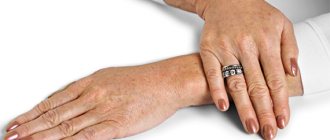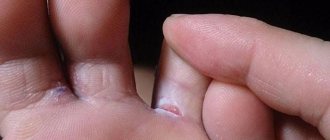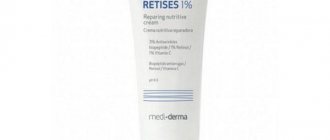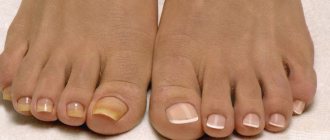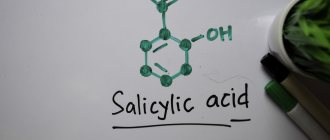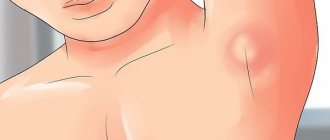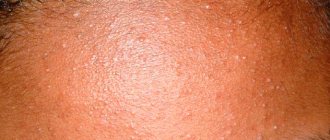As a child, everyone had such tender, beautiful heels. How to restore their former softness, what to do if the heels are yellow? Every adult who wants to look good from head to toe thinks about this.
Many women experience yellowing of their heels, which occurs for various reasons. This defect is especially inconvenient in the summer, when you want to change into open and light shoes. Only a few know what a woman should do in such a situation and how to get rid of yellowed skin on her heels. Yellowed palms are also not without reason. What are they pointing to? Let's talk about this in more detail.
Causes of yellow heels
Those who do not pay attention to this part of the body have heels that are an unsightly dark yellow color, with rough, rough, cracked skin. The reason for yellow heels may be completely banal - they can be stained by shoes or socks, especially if the foot sweats in them.
On a note!
Yellow skin on the heels is an overgrown stratum corneum and indicates metabolic disorders or digestive problems.
Heels may also be yellow due to gallstones or liver disease, which is responsible for removing toxins from the body.
The reasons for the appearance of yellowness on the heels can be quite banal, it’s just that the heels are stained yellow by the shoes. In addition, this can happen when the foot often sweats.
In addition, there are many other causes of yellowed skin on the heels:
- Deterioration of blood supply to the lower extremities. If this is the essence of the problem, then rubbing and hardening the feet will help.
- Another possible factor in the appearance of yellow heels is an unhealthy liver. In this situation, it is better to visit a doctor and undergo a medical examination. Only by curing this disease can you get rid of the problem of yellowness. To do this, you will have to cleanse the body and also improve its health.
Cirrhosis of the liver
This reason is the most dangerous of all listed. Cirrhosis is indicated not only by yellow palms, but also by many other symptoms:
- constant dry mouth;
- nausea;
- fast fatiguability;
- general exhaustion of the body.
Pay attention to how your fingers look: in people with cirrhosis, they lose weight dramatically.
Only the palms and soles of the feet turned yellow
You can remain calm if a yellowish-orange color appears on the palms and soles with the following symptoms:
- most pronounced in areas of the palms adjacent to the thumb and little finger, as well as on the heels;
- there are no longer any signs of jaundice in other places (first of all, pay attention to the eyes, since the sclera, i.e., the “whites” of the eyes, are the first to turn yellow in real jaundice).
Doctors call this type of jaundice false, as it is associated with an excess of beta-carotene in the body. A substance that is a precursor to vitamin A, which is practically harmless in its properties. An excessive amount of this component is deposited in the skin, giving it a characteristic color.
On a note!
Typically, excess beta-carotene occurs due to excessive consumption of carrots, oranges, pumpkin and other orange-colored fruits and vegetables. This type of jaundice is harmless and goes away on its own with a decrease in these foods in the diet. However, the pigment is washed out of the skin for a long time - months and even years.
Impact of tobacco
Yellow palms often indicate a heavy smoker. Tobacco stains teeth with an unpleasant yellowish coating, but few people know that fingers, nails, and palms are also stained. However, the good news is that the skin returns to its normal color soon after a person quits smoking.
Listed above are only the most common and relatively harmless cases.
What to do if your heels are yellow? We will give some recommendations on how to whiten your heels. Everyone knows how to remove rough skin. The easiest way is to visit a beauty salon and get a pedicure. But heel whitening procedures can also be done at home. This can be done using various compresses, foot baths, and so on.
How to remove the stratum corneum and whiten your heels? Of course with the help of foot baths:
- With apple cider vinegar. Add 2 tbsp to warm water. spoons of vinegar and leave your feet for 15 minutes. Rub your heels with artificial pumice, and then rinse your feet with cold water, dry and apply cream.
- Soda - soap bath. Half a teaspoon of baking soda and 1 tbsp. Dissolve a spoonful of liquid soap in water. Beat the foam intensively and place your feet in the resulting solution. Brush your heels with a pumice stone or pedicure brush.
- With white clay. Water is added to the clay purchased at the pharmacy and the feet are placed in the bath. After softening, rub the heels and rinse the feet with water, lubricate the heel areas with cream.
- With hydrogen peroxide. A few tablespoons of hydrogen peroxide are poured into warm water, where the feet are placed for 20 minutes. The product exfoliates and whitens the skin of the heels well.
- With egg yolk. An egg mask made from yolk, a teaspoon of lemon juice and starch and a teaspoon helps effectively. The mask is applied to steamed heels, after drying, it is washed off with warm water and moisturized with cream.
- You can whiten your heels with a solution of three percent hydrogen peroxide and lemon essential oil added to foot cream.
- It is recommended to wipe your heels with lemon juice, which returns softness and whiteness to the skin. After this, you need to treat the skin with pumice and apply a special moisturizer. Repeat the procedure a few days later. In the future, dead skin can be removed with a foot scrub twice a week.
Everyday high-quality care for your own heels should become a habit for a woman. This is not difficult to do, especially while taking a bath.
On a note!
To provide your heels with the necessary care, you will have to regularly rub your feet using a special brush or pumice stone. A coarse washcloth is also suitable for this. After this, the woman’s legs should be wiped dry with a towel and moisturizing cream should be applied to the feet using massage movements. After such water procedures, the cream will be absorbed much better and have a positive effect on the skin.
What to do if your heels are yellow from shoes? A foot bath with chamomile or nettle with the addition of soda will help, as well as masks made of white clay, kefir, cottage cheese or yogurt. A special case is bedsores on the heels.
Modern cosmetic lines produce a series of whitening products that differ in the method and intensity of action. They contain chemical acids and natural extracts from plants: aloe, yarrow, bearberry and essential oils.
On a note!
Yellow palms and feet in a child
Yellow palms, and more often and more noticeably this yellowness appears on the feet, is a symptom of the so-called carotene jaundice, which, contrary to popular belief, is rarely associated with a large amount of carrots eaten. Much more often, the cause of excess beta-carotene in the body is the consumption of large amounts of citrus fruits, apples, persimmons, apricots, and many other fruits.
The following common vegetables also contain a lot of carotene: tomatoes, zucchini, peas, even raspberries are a source of carotene. All these fruits and berries are very loved by children, and the fragile body has not yet learned to correctly select the required amount of carotene from food. This goes away with age, but you need to see a doctor, he will prescribe tests to rule out other causes: Gilbert's syndrome, a hereditary disease associated with pigmentation.
You need to visit a doctor and examine the condition of the liver; if everything is fine with the liver, then contact a hematologist to check the condition of the blood. If after the examination it is confirmed that everything is fine with the child, then these are some kind of skin pigments associated with the genetic characteristics of your child.
What can cause skin discoloration?
Let's assume you lead a completely normal lifestyle, eat normally and take reasonable care of your health. However, one fine day someone you know notices that your palms have turned yellow. What is this connected with? First of all, it should be recalled that human skin is a kind of mirror, which reflects all the changes occurring in the body. Has the person eaten too much sweets? The skin reacts to this instantly: most likely, the next day the sweet tooth will wake up with a face covered in pimples. Spent too much time in the sun? The epidermis will express its “fi” by redness and peeling. Are you nervous or just too hot? The skin becomes covered. There are many such examples. So, yellowed palms are not without reason. What are they pointing to? Let's talk about this in more detail.
False jaundice
If, during a visit to a therapist, you complained about yellow palms, the following entry may appear in your medical record: “False jaundice.” What does it mean? First of all, there is no need to be scared. Unlike real jaundice, this disease does not threaten you in any way: with false jaundice, a person only develops external symptoms of the disease (in particular, the color of the skin changes). The internal organs are not affected at all. It's likely that your yellow skin is due to eating too many carrots and oranges (perhaps you're on a special diet?). Carotene accumulates in the blood.
Causes of spots
Yellow spots on the body or hands can appear for various reasons, mainly the following:
- A person moves quite little, in most cases this applies to office workers.
- The body lacks vitamins and nutrients.
- Frequent drinking of alcoholic beverages or smoking, in this case, yellow spots mainly appear on the fingers.
- Poor nutrition, a lot of useless food in the diet.
If all the reasons listed above are excluded, you need to go to the hospital and undergo an appropriate examination. Our skin is a kind of mirror that reflects everything that happens in the body. Even minor changes in its operation can lead to yellow spots appearing on the hands as if caused by iodine.
OTHER
For any woman, the news that she will soon become a mother is certainly a joyful event. IN…
If your newborn baby was born on time and the birth went without complications, then his skin is tender,…
The eyes react quite sensitively to many changes in health status. This observation has been made by doctors for many years...
According to medical statistics, over the past ten years, cases of dermatological…
Yellow feces are something that is not commonly discussed in everyday routine life. Even with the closest friends, not everything...
Why are the eyes yellow? In fact, yellowing of the white of the eyes is a symptom that should never be...
What can red palms tell you? Palms can tell you about the state of the body just as well as high-precision tests.…
Gunther's disease (also known as erythropoietic porphyria) is a very rare disease that is transmitted from…
Jaundice (also known as icterus) is a yellowish pigmentation of the skin, whites of the eyes and other mucous membranes,…
The diagnosis of liver cirrhosis, the symptoms of which will be described below, is cell death and restructuring...
People are born with this disease; it is genetic and inherited. Gilbert's syndrome is a condition...
Jaundice occurs due to an excess of bilirubin in the body of a sick person, a substance formed as a result of the breakdown of...
Not only a fortune teller can tell about a person from the palm of his hand. It turns out that our hands carry much more information...
At 22 weeks of pregnancy, the future baby already looks like a miniature newborn, its height is 27.5 cm, and its weight is 350 -...
Many people are concerned about the question “Why do palms turn yellow?” Most often, pronounced yellowness of the skin is observed in the morning. To identify the exact cause of such pigmentation, it is necessary to undergo a medical examination. Modern medical centers have everything necessary for this. Yellow palms and feet may be the first sign of the development of serious diseases in the body.
The most common causes of yellow hands are:
- improper, sedentary lifestyle;
- lack of vitamins and microelements;
- bad habits (smoking, alcohol abuse);
- poor nutrition.
If all of the listed causes of yellow hands can be excluded in your case, then you need to consult a medical specialist. The thing is that the skin is a kind of mirror of the whole organism. The slightest disturbances and changes in the functioning of organs and systems of the body can appear on the skin.
Orange spots can appear on the palms and soles of both adults and children. At the same time, a large amount of a special pigment is produced - bilirubin, which is a consequence of the breakdown of hemoglobin. This element is very important for blood health, as it is responsible for the transport of oxygen and carbon dioxide.
Palms and fingers with orange spots in an adult can be considered signs of the following diseases:
- False jaundice. This diagnosis can be made to you by a therapist after an initial examination of the skin. What does it mean? There is nothing terrible about the disease, since it only manifests itself externally. All organs and systems remain completely healthy. It is recommended to reconsider your diet. Your palms may turn yellow if you eat a lot of citrus fruits or carrots, thereby accumulating too much carotene in your blood.
- The influence of smoking. All heavy smokers develop yellow spots on their hands. It is known that nicotine has an extremely negative effect on human health. Frequent smoking can change not only skin pigmentation, but also the color of teeth and nails. Not only does it look unaesthetic, but it also harms internal organs.
- Cirrhosis of the liver. This is a very dangerous disease, which is also accompanied by the appearance of yellow spots on the palms and soles. If, in addition to external signs, you often feel dry mouth, nausea, or get tired quickly, you must immediately undergo a full medical examination. Fingers with cirrhosis become very thin and thin.
There may be several reasons for changes in skin pigmentation in a baby. Most often they are completely harmless. Review baby food. It may contain too many foods high in carotene. Pigmentation changes can also be inherited.
To be completely confident in your child’s health, it is better to consult a specialist and undergo all the necessary tests. Yellow spots on the skin may indicate problems with the liver or bile.
The color of people's palms can change as they get older. This is due to natural changes in the aging body. In addition, older people often develop orange or brown pigment spots on their hands. This is completely normal and safe.
Changes in skin color definitely indicate problems with the human body. Today, we will talk about why palms turn yellow and how to get rid of it.
Age spots on the hands. Work protocols. Peculiarities.
The skin of the hands is especially susceptible to age-related changes. With age, the thin and delicate skin of the hands becomes increasingly rough, its color changes, and age spots may appear. Most often, age-related pigmentation on the hands manifests itself in the form of chloasma and lentigo.
Chloasma
They are dark gray and yellowish spots of various sizes that are formed due to increased production of melanin.
Lentigo
These are light brown and black spots that appear due to excessive accumulation of melanin in the skin. Typically, lentigo spots appear on areas of the skin that have been very exposed to sunlight, for example, on the hands. Such age spots are not flat, but rise slightly above the skin.
Such hyperpigmentation in the arm area, as a rule, does not pose a threat. However, a form of pigmentation like melanoma is dangerous. If the patient notices that pigment spots change their size, shape, color, itching appears or begins to bleed, then it is necessary to immediately consult with an oncologist.
In cases of pigmentation, which is not a threat to health, but only causes aesthetic discomfort for the patient, cosmetology can offer variable techniques to solve this problem.
Methods for treating age-related hand pigmentation:
Chemical peels
To treat pigmentation, acids are used that block the enzyme tyrosinase, which is involved in the process of melanogenesis. For example, kojic, azelaic, ferulic, lactic acids. Thanks to its composition (salicylic acid, lactic acid, resorcinol), Jessner peel has an excellent exfoliating and brightening effect.
Bioreparation
Targeted delivery of components that control melanin production and have a brightening effect. For example, the drug Hyalrepair 04 is based on modified hyaluronic acid with vitamin C, glutathione and cysteine. The drug fights hyperpigmentation and signs of photoaging.
Laser therapy
Laser therapy can combat both epidermal and dermal hyperpigmentation. It is an effective modern method for correcting age spots, however, it requires a long rehabilitation period.
Microneedling therapy with a drug based on Vitamin C
An equally effective procedure in the fight against age-related pigmentation of the hands is the nappage procedure or the use of Dermapen with a preparation based on Vitamin C in a concentration of at least 20%. Vitamin C is one of the few ingredients that can affect the process of melanogenesis. Ascorbic acid acts directly on the process of formation of the pigmented area, destroying it. In addition, Vitamin C perfectly improves the barrier functions of the skin and protects the skin from UV rays.
The main thing in the fight against pigmentation is to regularly and efficiently protect your hands from exposure to sunlight, using photoprotectors with an SPF level of protection from 30 to 50. For prevention purposes, it is recommended to use products that contain components that affect melanogenesis: Vitamin C, azelaic acid and ferulic acids, thiamidol, etc.
Sources:
https://www.wonderzine.com/wonderzine/beauty/otherbeauty/256249-pigmentatsiya-i-voprosy-o-ney
https://www.myeucerin.ru/about-skin/indications/age-spots
https://skin.ru/article/kak-izbavitsja-ot-pigmentnyh-pjaten/
Reasons for changing shade on the skin of the palms
Our body is a coherent system that depends on the work of all organs. If at least one of the organs performs its function poorly, the system malfunctions and the body indicates in possible ways the existence of a problem - in our case, these are yellow palms.
The reason for the appearance of yellowness on the palms may be a dysfunction of the liver or choleretic bladder. Processes harmful to the body can be provoked by the following diseases:
- cirrhosis of the liver;
- inflammatory processes in the choleretic ducts;
- inflammatory processes in the gallbladder;
- hepatitis;
- gallstone disease.
But you shouldn’t immediately fall into despair, because yellow palms can indicate “false jaundice.” This disease does not pose a particular danger to the body, since only external signs of the disease appear, and the functioning of the internal organs is not impaired.
Another thing is if you are worried not only about the yellowness of your hands, but also about accompanying symptoms, such as abdominal pain, painful sensations when urinating, etc., without hesitation, you should consult a doctor to conduct a full examination.
In any case, only a specialist can confirm or refute the diagnosis, so do not delay going to the doctor.
Recovery forecasts
The prognosis for different diseases differs. It largely depends on how quickly the patient sought treatment:
- Hepatitis C. In the absence of treatment, if a person does not have bad habits, within 20 years hepatitis leads to cancer or cirrhosis in 10-20% of patients. If you abuse alcohol, nicotine or medications, the risk increases to 40%.
- Mononucleosis . In case of a disease not complicated by other pathologies, the prognosis is favorable. Bad factors are rarely observed.
- Gallstones . In case of cholelithiasis, laparoscopic cholecystectomy is required to eliminate the pathology, then the prognosis will be favorable and the risks will be minimized. Refusal of the procedure due to various factors can lead to blockage of the bile ducts and acute inflammation, in which case the organ and surrounding tissue will have to be removed.
- Spherocytosis . With a hereditary form of the disease, the prognosis is favorable, but with a hemolytic crisis, death is possible. This happens due to improper treatment. It is also important to consider that the pathology increases the risk of having a child with the same diagnosis by up to 50%.
- Sickle cell anemia. The prognosis for the disease is unfavorable. During the first 10 years of life, patients die from infections or thrombo-occlusive complications.
- Cholecystitis . The chronic form of the disease responds well to treatment and is completely under control. The main thing is to avoid complications and consult a doctor if there are complications. If the gallbladder ruptures, peritonitis may occur and death may occur.
Benign neoplasms have a favorable prognosis and respond well to treatment. In case of malignant tumors without therapy, death occurs within a year. After operations, life can be extended by 3-5 years.
The effect of carotene on skin color
Excessive consumption of certain fruits, vegetables or root vegetables can also cause yellow palms. Review your diet, maybe lately you have become interested in eating carrots, pumpkin, squash or tangerines.
When consuming products containing keratin, most of the substance is absorbed into the blood and distributed throughout the human body. Due to the fact that the skin of the palms contains less of the coloring substance melanin, an excessive amount of keratin in the body may manifest itself as yellowish palms.
Yellowness is a sign of a serious illness
Yellowness of the palms can hide serious diseases, such as infectious jaundice can be caused by hepatitis B, A, C. In the acute form, the body temperature may rise, nausea, and abdominal pain may appear.
Another serious disease that causes yellow palms is anorexia nervosa. The disease is accompanied by a number of symptoms:
- fear of gaining weight;
- obsessive desire to lose weight;
- disturbances in a person’s consciousness about his own appearance (even with exhaustion of the body, a person considers himself very fat);
- rapid weight loss (15% of usual body weight);
- changes in skin color, yellowing of the palms;
- aggressiveness;
- drowsiness, fatigue.
This disease most often occurs in adolescents and women, which can be triggered by severe shock. The disease initially manifests itself in a sharp change in behavior and refusal to eat. Refusal of normal food provokes the development of other, more complex diseases. In this case, it is important to identify the problem in time and contact a specialist.
Diagnostic methods
To understand the true cause of yellowing of the palms, a comprehensive diagnosis will be required, which begins with interviewing the patient.
The doctor will ask about foreign travel, drug or alcohol use, changes in the color of urine or stool, and other symptoms. Next is prescribed:
- Analysis of urine . Helps to separate hepatitis from other diseases, as well as to recognize the form of jaundice.
- Blood chemistry . Taken from a vein to assess the condition of the pancreas, kidneys, liver, heart and gall bladder.
- Liver tests . Necessary for detecting alcoholic liver disease, hepatitis and cirrhosis. In these diseases, special enzymes are found in the blood.
- Ultrasound . Performed to visualize the liver.
- CT and MRI . They allow you to create a detailed image of the organ and identify the slightest structural changes.
- RCP . Diagnostics performed with an endoscope. Necessary to determine the patency of the ducts of the organ.
If cancer or cirrhosis is suspected, a liver biopsy is prescribed under local anesthesia.
Yellow palms due to jaundice
Jaundice is a disease characterized by the appearance of a yellowish tint on the skin and mucous membranes. Yellow spots are especially noticeable on the palms, lower part of the tongue, and also on the eyeballs.
To understand the causes of jaundice, you should know that yellowing of the skin is caused by an increase in bilirubin, which is produced as a result of the breakdown of another component of the blood - hemoglobin. Bilirubin is divided into two types:
- indirect bilirubin occurs immediately after the breakdown of hemoglobin;
- direct bilirubin is produced by the liver after a series of biochemical reactions.
Having learned about the peculiarities of bilirubin production, we can move on to our main question - why do hands turn yellow during jaundice. First of all, it should be said that jaundice comes in several types:
- hemolytic - the disease occurs as a result of the accelerated process of hemoglobin breakdown. As a result, an excessive amount of indirect bilirubin is produced, which the liver does not have time to process directly;
- hepatic – a disease caused by damage to the body’s main filter, the liver. There may be several reasons: drug, alcohol poisoning, toxic effects on the body, viral hepatitis, etc.;
- cholestatic - the disease occurs due to blockage of the bile ducts. Closure of the bile ducts can occur in the presence of a tumor or stones.
Do not try to treat jaundice on your own, even if you have already encountered a similar disease. Many online forums contain information about the treatment of this disease with diuretic decoctions. But if jaundice is caused by stones in the gallbladder or its ducts, such treatment will worsen the situation several times.
Why do palms turn yellow?
This skin color is associated with the production of bilirubin, a pigment found in the blood. Bilirubin is a substance resulting from the breakdown of hemoglobin proteins, which, in turn, is contained in red blood cells and performs a transport function - it moves oxygen and carbon dioxide.
Bilirubin is excreted from the human body along with feces. If any disorder occurs and an excessive amount accumulates, the palms or other parts of the body become yellow.
Increased bilirubin levels primarily affect skin color changes. Most often the legs, lower eyelid, and area around the nails are affected. Sometimes the disorder manifests itself in yellowing of the whites of the eyes, palms, and surface of the tongue. It is worth noting that another sign of increased bilirubin is darkening of the urine - it takes on a “beer” color.
The effect of carotene on skin color
The causes of yellow palms, face and feet may lie in increased levels of carotene. Very often this happens with excessive consumption of a number of foods, for example, carrots, oranges. This also happens as a result of taking certain medications.
If the skin has changed color due to an increase in carotene levels (false jaundice), there is nothing to worry about. It is worth reducing the consumption of carotene-containing foods and stopping taking medications that provoked the change.
Yellow palms due to jaundice
Why does skin color change?
Very often, this kind of metamorphosis indicates liver pathologies. This is a classic symptom of hepatitis (acute and chronic), cirrhosis, and Gilbert's syndrome. This phenomenon may indicate the presence of cysts in the organ or its damage by parasites.
However, any liver disease is accompanied by other symptoms, so difficulties in diagnosis almost never arise. Conditions such as pale stool, dark urine, abdominal pain, chills, loss of appetite and weight loss are present.
Yellow palms and feet in an adult or child may appear due to disruption of the functioning of the biliary tract. To understand whether this is actually the case, a comprehensive diagnosis is necessary. It is also worth considering that a change in the color of the skin can occur due to poisoning with toxic substances and medications, burns and serious blood loss.
In adults, this phenomenon can occur with almost constant stay indoors. In addition, yellow hands are a sign of a smoker. If there are no internal pathologies, you need to pay attention to the diet. In both children and adults, changes can occur due to the consumption of excessive amounts of dry and sweet foods.
You also need to pay attention to your food: eating too much carrots can change your skin color. This applies to both the fruit itself and dishes made from it. The same can be said about cumin and vinegar, which contribute to the pathological accumulation of bile vapor in the blood.
If the skin has acquired a pale yellow tint, and yellow spots have appeared on the eyelid and iris, a lipid metabolism disorder may occur. As a result of this deviation, the amount of cholesterol in the blood increases.
Sometimes it happens that yellowness indicates the development of oncological pathology. For example, cancer is characterized by a change in complexion, with the skin looking bloodless and waxy.
If the color is closer to orange, hypothyroidism may occur - a pathology of the endocrine system, characterized by disruption of the thyroid gland. The disease leads to the development of a deficiency of those substances that process beta-carotene. As a result, it accumulates in subcutaneous fat, which leads to metamorphosis with a skin tone.
This phenomenon in a newborn child may be associated with the body’s natural reaction to a change in environment. In pediatrics, this condition is called physiological jaundice.
In children, in the first days of life, bilirubin is produced in large quantities, but by about the third week this condition disappears on its own. But it is still necessary to consult a doctor to exclude the development of pathological jaundice.
How to eliminate yellow spots that appear on the palms or other parts of the body
Before starting treatment, you need to find out what exactly caused the pigmentation disorder. In such a situation, it is better not to postpone a visit to the doctor, especially if the issue concerns a child. An infectious disease specialist, endocrinologist, hematologist or gastroenterologist can carry out the diagnosis and make a conclusion.
The course of treatment is not aimed at relieving this symptom, but at eliminating the cause.
Having gotten rid of the latter, the condition of the body also normalizes:
- In some cases, you only need to change your lifestyle and menu, then the yellowness will recede by itself;
- Pathologies of the liver and biliary tract require complex treatment and a very serious approach. Very potent agents are used, so the symptoms quickly disappear or their severity noticeably decreases, for example, the skin of the palms and feet acquires a standard shade. It is worth noting that the treatment complex may include not only conservative methods, such as medication and physical therapy, but also radical ones - surgical interventions;
- In newborn babies with physiological jaundice, the signs of the disease disappear on their own after a few weeks, but the local pediatrician must monitor the child’s condition in order to exclude or promptly detect liver pathology. Sometimes they resort to phototherapy, which involves exposing the baby to the glow of a fluorescent lamp. This procedure allows you to destroy and remove bilirubin from the body.
In the future, you need to adhere to preventive measures, monitor your health more closely and, if any violations occur, seek medical help.
Adults should take steps to prevent hepatitis infection, such as practicing basic hygiene and teaching this to their children.
Most people turn to dermatologists and ask the question why do they have yellow spots on the skin of their hands? Most often, yellowness can be observed in the morning, but sometimes it persists throughout the day. In order to determine the cause of such pigmentation, it is necessary to undergo an examination. Every modern clinic should have all the necessary equipment for examination. It is possible that yellow spots on your hands indicate that you are developing some kind of disease.
Yellow palms of a child
Parents' concerns about their child are quite natural, especially when it comes to the baby's health. But there is no need to sow panic prematurely, because yellowed palms of a baby most often do not promise serious health problems.
A baby may have yellow palms for several reasons:
- hereditary feature;
- carotonemia - occurs as a result of excessive consumption of foods containing carotene. In the human body, carotenoids are processed into vitamin A. To eliminate the problem, you should change the baby’s diet.
But besides the harmless causes of yellow palms, there are other, more serious ones:
- hyperbilirubinemia - accompanied by a significant increase in bilirubin in the blood. The disease is manifested by a yellowish tint to the skin and a change in the color of the mucous membranes;
- liver problems;
- problems with bile.
To rule out complex diseases, take your baby to the pediatrician and get all the necessary tests.
Yellow palms in an adult
Palms with a yellow or orange tint in an adult may indicate the following problems:
- Nicotine addiction. In almost all heavy smokers, the color of the skin, teeth and nail plates changes, but the internal organs suffer the most. Frequent smoking is a provocateur of diseases such as periodontal disease or cirrhosis of the liver;
- Cirrhosis of the liver. The disease manifests itself as yellowing of the palms and soles of the feet. The patient may also suffer from constant nausea, dry mouth, fatigue, and general exhaustion of the body.
Most people are in no hurry to get examined, arguing that they are constantly busy with problems or are simply afraid to hear the shocking truth, thereby worsening the situation. It is important to understand that the sooner a person with a serious illness begins treatment, the greater his chances of recovery.
How to eliminate yellow spots
Before you begin to eliminate yellow spots, you need to accurately determine the cause of their appearance. To get rid of yellow palms you need to:
- If the reason for poor skin color lies in an unhealthy lifestyle, namely: smoking and drinking alcohol, then you should start by giving up bad habits. After a person stops drinking and smoking, the body is gradually cleansed and freed from toxins, and the skin color gradually returns to normal. You can also use entire complexes to cleanse the body, after consulting with your doctor;
- yellowness from excess carotene will go away on its own if you create the right diet;
- jaundice of the physiological type (the disease manifests itself immediately after the birth of the baby) goes away after a few weeks, but the local pediatrician must monitor the situation. In some cases, it is recommended to use phototherapy - exposing the newborn to light from a fluorescent lamp. The procedure allows you to destroy unnecessary bilirubin much faster and remove it from the body. If the jaundice does not go away within several weeks, the pediatrician prescribes medications to the baby in the form of droppers;
- to get rid of yellowness, which is provoked by pathologies of the bile ducts or liver, only complex therapy under the supervision of a doctor is necessary. As a rule, in such cases, a specialist prescribes potent medications, so the severity of external symptoms decreases very quickly. Depending on the situation, treatment of the patient may consist not only of medications and procedures, but also include surgery.
Do not ignore changes in health that are happening to you or your relatives, because even the yellowness of your palms can indicate illness.
Pathological causes
Many dangerous diseases begin with symptoms that are ignored. Yellow arms, hands, palms or shoulders require attention and diagnosis, especially if the symptom persists for a long time.
Hepatitis C
When infected with the hepatitis C virus, liver damage , which leads to inflammatory processes. The first symptoms of the disease may appear 1.5-6 months after infection. However, even after this time there is no guarantee that they will definitely appear. In the acute period, signs include:
- decreased appetite;
- weakness and fatigue;
- depression;
- joint and abdominal pain;
- digestive problems;
- discomfort under the right ribs;
- nausea, yellowness of the eyes and skin, lightening of the stool and darkening of the urine.
There is no specific treatment for the disease , but its complications can be controlled by a proper diet avoiding sweets, fats and salty foods. It is important to maintain a healthy weight and prevent its gain, so as not to provoke fatty liver disease. Antiviral agents are also used for therapy if this is acceptable for a particular patient.
In 2016, WHO recognized hepatitis C as a curable disease. For this purpose, special expensive drugs are used: Sofosbuvir, Ledipasvir, Glecaprevir, Grazoprevir and other analogues.
Infectious mononucleosis
The viral disease affects the liver and spleen. Occurs upon penetration into the oropharynx. Atypical cells are found in the blood. Most often occurs during puberty at 14-18 years of age. Accompanied by symptoms of acute respiratory infection:
- fever and chills;
- sore throat, enlarged tonsils;
- hyperemia of the mucous membrane;
- muscle aches, headaches;
- intoxication;
- granularity of the posterior pharyngeal wall.
The febrile state may persist for several months.
Valeria
General doctor
Ask a Question
For the treatment of mononucleosis, diet No. 5 is usually used; if there are signs of liver dysfunction, bed rest is observed. Drugs are selected depending on the clinical picture. For example, if there is a threat of asphyxia, prednisolone is prescribed. Antibiotics are used only to prevent secondary infections or for necrotizing processes in the pharynx.
Anorexia nervosa
The pathology is associated with psychological disorders and is accompanied by a strong fear of gaining excess weight or a desire to lose weight.
A person brings himself to an unhealthy thinness and cannot gain weight. Yellowness of the skin and palms is one of the first signs of anorexia nervosa. Gradually, the person begins to lose weight intensively and feels unwell. To eliminate the disease, effective psychotherapeutic assistance is required. Weight restoration and nutritional support are carried out in medical centers.
Gallstones
Gallstone disease is the deposition of stones from salts and fats in the gallbladder. Accompanied by loss of appetite, pain on the right side and jaundice in different parts of the body. The disease is widespread, especially in women. Diagnosed in 10-15% of the adult population .
The following factors can provoke cholelithiasis:
- heredity;
- poor diet with a predominance of fatty, sweet or salty foods;
- age after 60 years;
- violation of fat metabolism;
- frequent overeating;
- bad habits and sedentary lifestyle;
- some medications;
- infections of the intestines and bile ducts, cirrhosis, diabetes mellitus.
Cholecystitis is often observed in pregnant women or women who have given birth multiple times.
In many cases, the disease is asymptomatic and is discovered accidentally during an abdominal ultrasound. The first manifestations are often associated with acute inflammation.
Valeria
General doctor
Ask a Question
In chronic cholelithiasis, choleretic drugs are often recommended. However, you can completely get rid of the pathology by removing the gallbladder. Thanks to modern laparoscopic techniques, this can be done quickly and without complications.
Hemostatic spherocytosis
An inherited disease that affects red blood cells. Causes jaundice of the eyes and skin, anemia, and enlarged spleen. Often, newborns with spherocytosis suffer from severe forms of anemia in the first year of life, but then the condition improves.
The causes of the pathology are closely related to genetic characteristics and mutations. For therapy, drugs are used to eliminate jaundice and anemia. The spleen is also removed, and a pneumococcal vaccine is given before surgery to prevent sepsis.
Sickle cell anemia
A hereditary pathology in which the structure of hemoglobin is disrupted. Found primarily in Africa, India and the Middle East. The causes of the disease are due to genetic mutations.
Sickle cell anemia is an incurable disease. Patients with it are constantly monitored by a hematologist if they do not die in the first years of life. During a hematological crisis, hospitalization and connection to special devices, as well as antibacterial therapy, are required.
Chronic cholecystitis
The disease affects the walls of the gallbladder, causing periodic inflammation. Exacerbation is accompanied by nausea, pain on the right side, vomiting and belching. Cholecystitis can be provoked by:
- increased viscosity of bile in cholelithiasis;
- biliary dyskinesia;
- anatomical features of the organ;
- infections, inflammation in the digestive system;
- poor muscle tone;
- diabetes mellitus or hypertension;
- changes in hormonal levels;
- poor nutrition.
Chronic pathology requires following a diet, taking medications to improve bladder motility and analgesics to eliminate pain. In severe cases, organ removal is indicated.
Liver tumors
It is customary to distinguish benign and malignant tumors. The former are characterized by a less intense flow, but can reach large sizes. Therapy involves removal of tumors and liver resection.
For malignant tumors, treatment is much more complicated and depends on whether there are metastases. Such processes often develop against the background of other diseases, including pathologies of distant organs. For therapy, radical removal, radiation and chemotherapy are used.
Valeria
General doctor
Ask a Question
When yellow fingers or hands appear, you need to remember what could have caused this condition. Smoking and eating certain foods is not a reason to see a doctor. If such a factor is excluded, additional symptoms should be analyzed. If the yellowness of the palms does not go away within a few days or gets worse, you should immediately consult a doctor.
